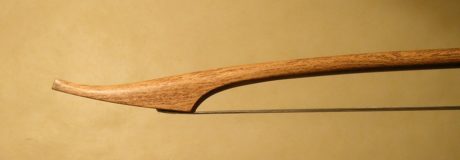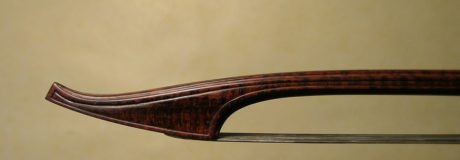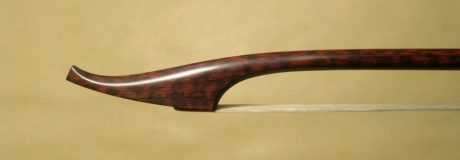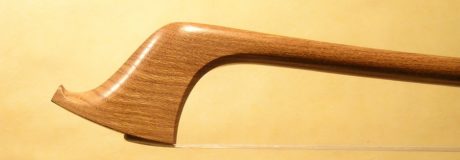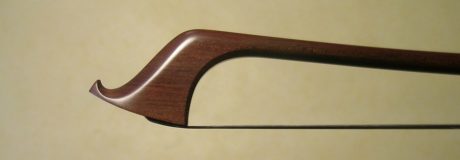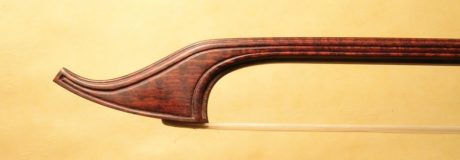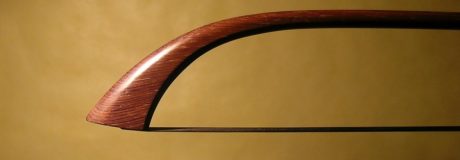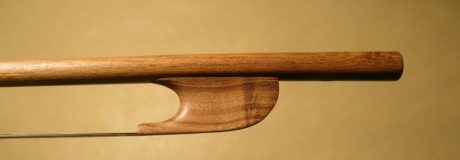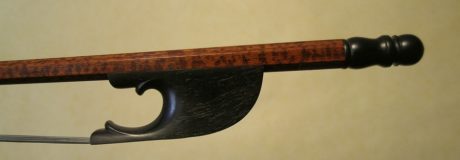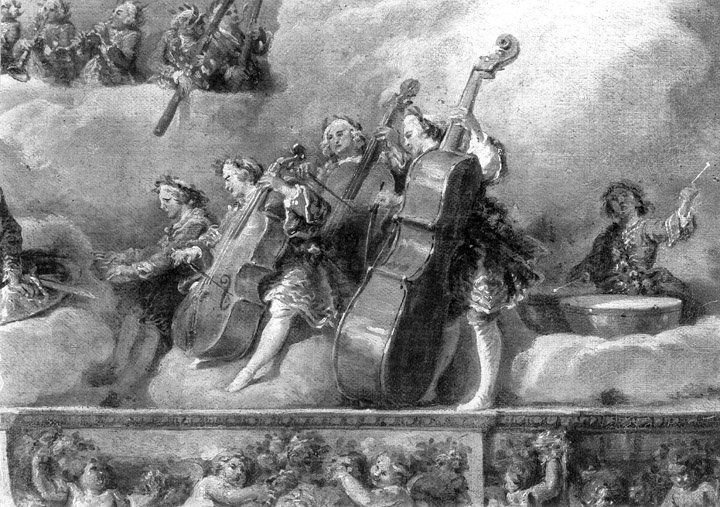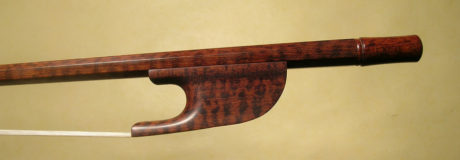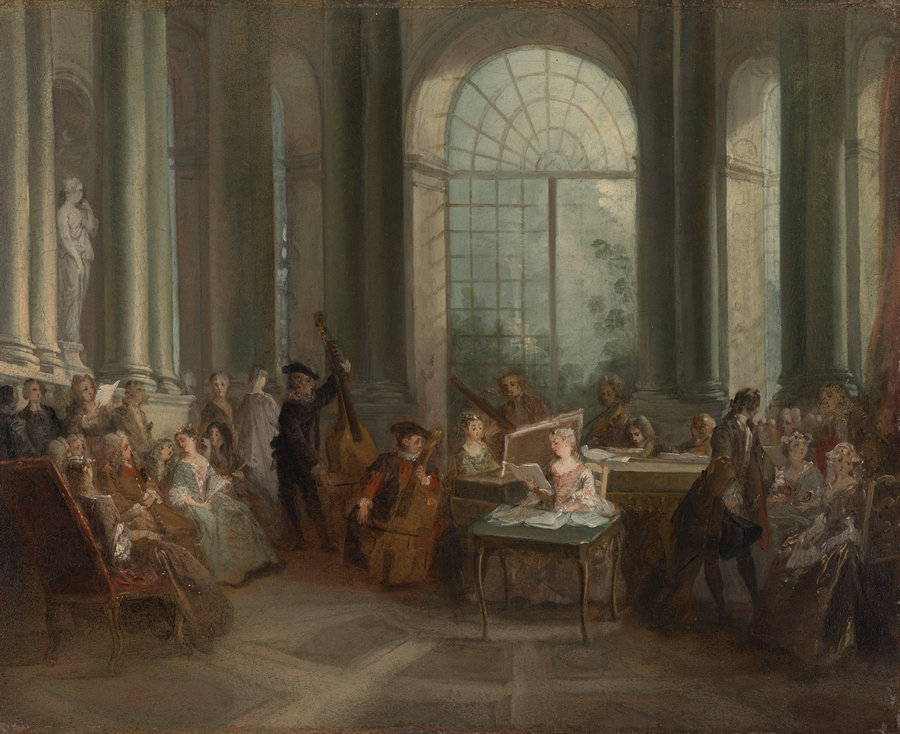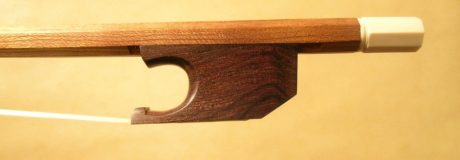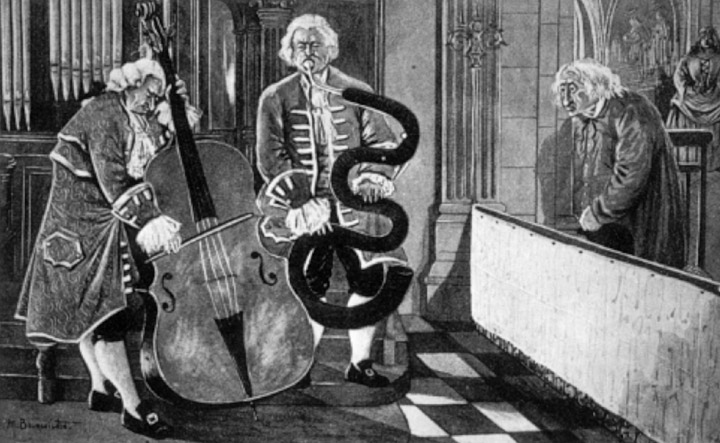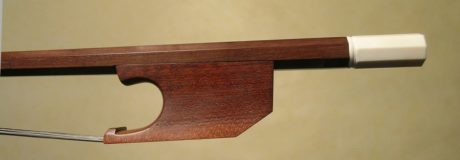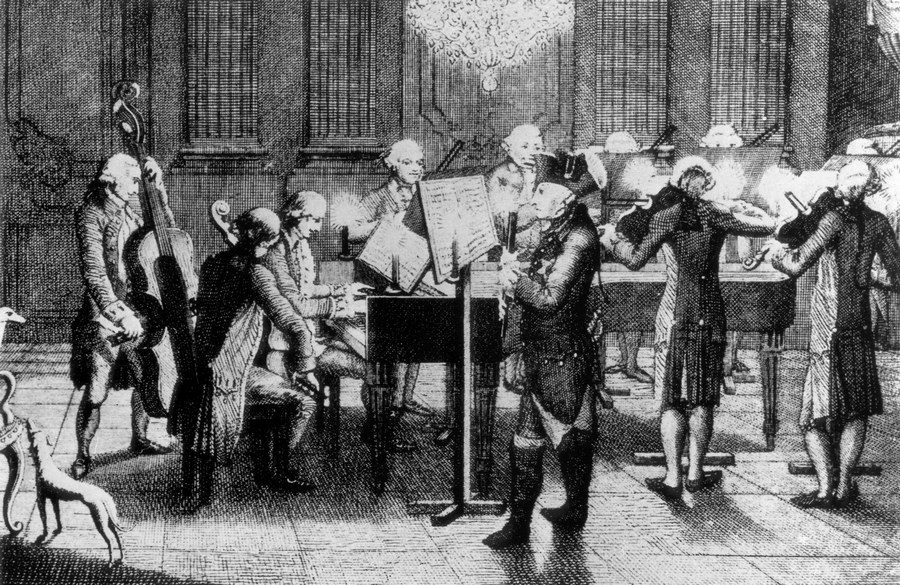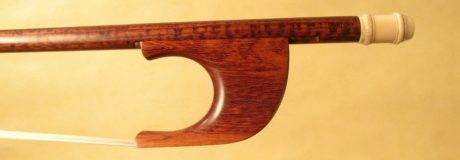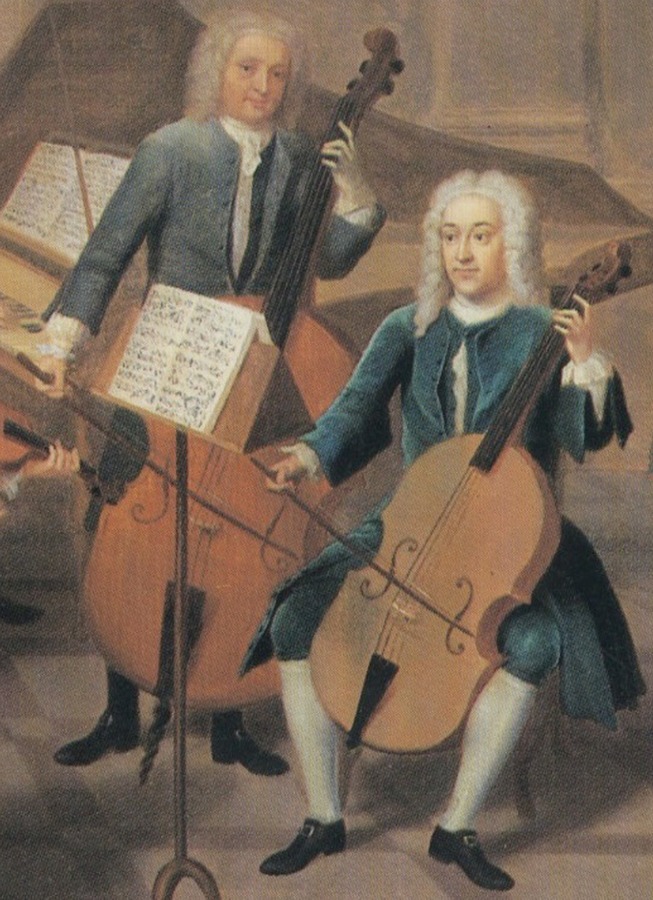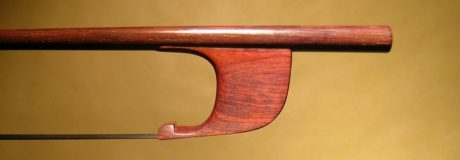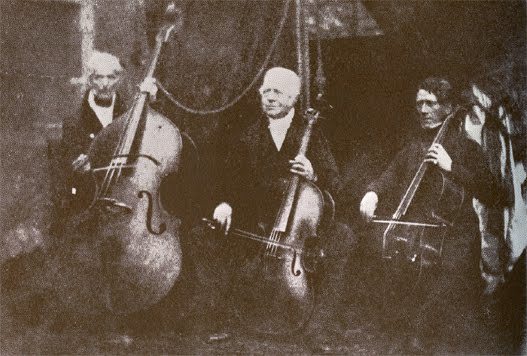Clip-in frog double bass bow
Ref. Cbf1Student baroque double bass bow
Ref. Cbf3Ironwood classical double bass bow
Ref. Cbf5
Clip-in frog double bass bow
Ref. Cbf1In order to make big gut strings vibration easier, dense European woods are often preferred for their relative flexibility and grip. The true service-tree (cormus domestica) and the laburnum are two interesting proposals because their mechanical qualities are exceptional. The sound of the laburnum is rich in harmonics and defined, that of the true service-tree both deep and bright. The bow is supplied with three frogs of different heights to allow variations of hair tension.
Stick length:72 cm
Playable hair length:54 cm
Weight:83-87 g
Georg Balthazar Probst (1732-1801), Hearing
The Hague, Gemeentemuseum
Baroque fluted double bass bow, French grip
Ref. Cbf2Snakewood is an extremely dense wood. Fluting lightens the bow in the upper three quarters without weakening the stick which keeps its edges. The grooves are not only decorative but they bring a lot of precision and liveliness (on this subject see my article Une histoire de l’archet de violon de la Renaissance au tournant du XIXe siècle).
Stick length:69 cm
Playable hair length:53 cm
Weight:108-112 g
Giovanni Paolo Panini, Musical Feast Given by Cardinal La Rochefoucauld for the Dauphin's Wedding
Paris, Louvre (inv.414)
Student baroque double bass bow
Ref. Cbf3This bow owes its lower cost to greater aesthetic sobriety and a simpler three-faceted frog fitting. Stick, frog and button are made of snakewood.
Stick length:69 cm
Playable hair length:53 cm
Weight:105-112 g
Concert in the Oval Salon of Pierre Crozat's Chateau at Montmorency, ca. 1720
Dallas, Museum of Arts
Classical double bass bow after Edward Dodd
Ref. Cbf4The original pernambuco bow from 1760 which inspired this model is particularly long and thick. The interpretation made here is more in keeping with today's double bass playing. The round stick is made of ipe wood (handroanthus spp.) or golden chain (laburnum anagyroides).
Stick length:68 cm
Playable hair length:55 cm
Weight:124-128 g
Bourguignon, Serpent and Double Bass Players
Autun, Saint Lazare Cathedral
Ironwood classical double bass bow
Ref. Cbf5Another interpretation of Edward Dodd's bow made of ferreol (swartzia panacoco) or of boco (bocoa proaenensis). Because of the density and hardness of these woods, the stick is thinner and a little more rigid than with the laburnum or the ipe.
Stick length:68 cm
Playable hair length:55 cm
Weight:124-128 g
Paul Haas, Frederick II playing a flute concerto, 1786
Fluted baroque double bass bow, German grip
Ref. Cba1The beautifully crafted original that served as the model for this bow is preserved in the Uffizi Museum in Florence. Again, it is very large. The reduction offered here fits better to the hand and arm of today's musician. The fluted stick is made of snakewood.
Stick length:67 cm
Playable hair length:53 cm
Weight:123-128 g
John Theodore Heins, Musical Party at Melton Constable, 1734
Private collection Marguerite Astley, Lady Hastings
Dragonetti double bass bow, German grip
Ref. Cba2This model, which was prevalent during a great part of the 19th century, was made from various wood species, from European fruit trees to pernambuco. Here is a ferreol version (swartzia panacoco) (swartzia panacoco), dense and dynamic wood, which allows to combine thinness and liveliness of the stick. The bow is supplied with three frogs of different heights to allow variations of hair tension.
Stick length:69,5 cm
Playable hair length:52 cm
Weight:130-135 g
David Octavius et Robert Adams. Domenico Dragonetti, Robert Lindley, and Charles Lucas, 1843-45
Edimbourg, Scottish National Portrait Gallery

